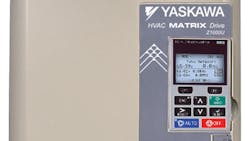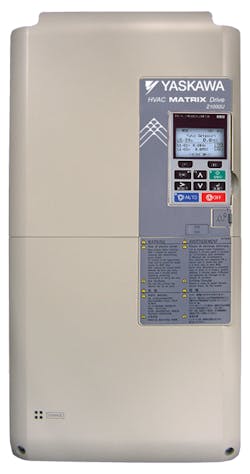The Drives & Motion Division of Yaskawa America Inc. recently announced the release of the Z1000U HVAC Matrix Drive.
Other features of the HVAC Matrix Drive include:
- Integrated input fusing for a 100-kA short-circuit current rating (SCCR).
- Eco-Mode to achieve near across-the-line THD.
- An integrated C2 EMC filter.
- Embedded BACnet communications (BACnet Testing Laboratory-certified).
- A multilanguage LCD operator with hand/off/auto and copy function.
- An internal real-time clock for event stamping.
- High-carrier-frequency (low motor noise) capability.
- 0- to 400-Hz output frequency.
NEMA 1 models with ratings of 1 to 100 hp (208 V) and 7.5 to 350 hp (480 V) are available. Z1000U is offered as a stand-alone drive, as well as in packaged bypass and configured solutions.
For more information, click here.
About the Author
Scott Arnold
Executive Editor
Described by a colleague as "a cyborg ... requir(ing) virtually no sleep, no time off, and bland nourishment that can be consumed while at his desk" who was sent "back from the future not to terminate anyone, but with the prime directive 'to edit dry technical copy' in order to save the world at a later date," Scott Arnold joined the editorial staff of HPAC Engineering in 1999. Prior to that, he worked as an editor for daily newspapers and a specialty-publications company. He has a bachelor's degree in journalism from Kent State University.

